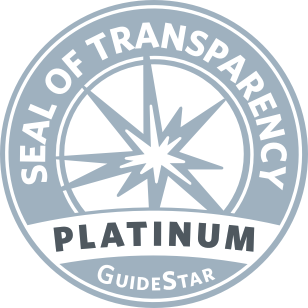Capturing Life Through A Deaf-Blind Lens
Beacon Stories
Brian Bossert has turned his passion for photography into a successful career. As a commercial photographer and videographer living with Usher syndrome, Brian has a unique perspective and is using his creativity to inspire others as he shares his vision through photos and videos.

Brian Bossert black and white headshot.
27-year-old Brian Bossert is a commercial photographer and videographer in Scottsdale, Arizona. Over the past ten years, Brian has traveled the world shooting subjects ranging from extremely rare vehicles to cutting-edge medical technology. Brian has an attention to detail that not only evokes emotion but also grabs the viewer's attention, and he's doing it all while living with an invisible disability.
At just two years old, Brian's parents confirmed that he was deaf. He was quickly able to get two outer ear hearing aids and was put in speech and hearing therapy to help. But around the age of 11, Brian started noticing trouble with his eyes transitioning from light to dark, so his mom took him to the eye doctor, who promptly told him he had retinitis pigmentosa (RP) but to go to a specialist to learn more. At first, they just understood that he separately had hearing loss and RP. But after receiving genetic testing about a year later, they discovered that he has a mutation in the USH2A gene, officially diagnosing him with Usher syndrome type 2A.
Being diagnosed at a young age, Brian recalls it being a confusing time and not fully understanding what was going on, but now that years have passed, he's grown to accept his Usher syndrome.
"My diagnosis has taught me how to look at life differently and not be so paranoid about what's going to happen tomorrow," says Brian. "It's changed my outlook on life but in a positive way. I've realized I don't have control over it, so if I let go, I have the opportunity to be optimistic about life."

Brian on a scissor lift to photograph a jet outside.
Now, Brian lives every day by sharing his remaining vision through photos and videos, a hobby that has become his full-time career.
Brian first recalls picking up a video camera in middle school, filming his friends skateboarding. In his junior year of high school, Brian originally enrolled in a trade school program to learn graphic design. But the school had a photography studio, and he was drawn to it immediately.
"In studio photography, you start with a dark room, and you need to shape light in order to expose your subject, and I realized it's a lot like my RP," says Brian. "When I explain to people how I see, I say my eyes are like old 35mm film; it needs a lot of light and contrast in order to see details."
After high school, Brian attended Arizona State University (ASU), where he got a job as a student photographer for the marketing office. Within the first week on the job, he was on the football field shooting, and that's when it clicked for him.
"I had this epiphany that I should just take a leap of faith and lean into photography," says Brian. "Going with the flow and taking risks is how I got to where I am today."

Brian standing on a ladder photographing a woman playing tennis.
Brian decided to withdraw from ASU and started his own company, ‘Brian Bossert Photography.’ One day at a print shop, Brian happened to connect with someone who makes music, and they started producing music videos together, which gave him the chance to teach himself how to edit videos.
"With music videos, there's no limit to creativity," says Brian. "So that's really where I developed my video editing skills."
After a couple of years in the music industry, Brian started to gravitate toward automotive photography. So, Brian went into a Barrett-Jackson showroom and asked who to contact. The next day, he interviewed at their HQ office and was hired as a photographer after they saw his portfolio. At just 19 years old, he traveled the world shooting rare multi-million-dollar car collections.
Currently, Brian works for himself and is able to be more selective in the clients he works with and the shoots he chooses to do. He prefers photographing large subjects, like automobiles or jets, and shooting in studio versus natural light, since he can control the lighting more easily.
"Still life photography is my favorite because it gives me the ability to experiment with light," says Brian. "The more contrast, the more dynamic a photo is, it's kind of how I see, the more contrast the better."
Brian also takes advantage of the bluetooth technology in his hearing aids during video shoots. He can plug a Bluetooth transmitter into his camera, which transmits audio straight to his hearing aids, so he's able to walk away from the camera and still monitor his subjects’ audio level.

Brian wearing sunglasses and a hat holding his camera in front of an antique blue car.
But regardless of all of Brian's skills and experience, it's still been hard for him to be open about his vision loss.
"If I'm telling a potential client that I have a visual impairment, I do worry they don't think I'm capable or competent enough to do the job," says Brian. "But that's what drives me now, I want to prove them wrong and show that I do have a visual impairment, but I can still do it. And my story has separated me from other people who do what I do."
Brian also recently started orientation and mobility training, and now that he's living on his own, he's preparing to start using a white cane.
"I've been pushing off getting a white cane for a long time, but now I'm embracing it," says Brian. "I'm learning that my story can be inspiring for other people, so I want to be a bigger part of that storytelling community. I've been hiding in the shadows with my disability for a while, and I've used photography and videography as a tool to share other's stories, so I'm realizing why not use it to share my story too. My disability gives me the ability to share my unique vision with the world.”
-

Brian Bossert’s work: 1998 Falcon 2000 jet exterior
-

Brian Bossert’s work: Three women working out at the Village Health Clubs.
-

Brian Bossert’s work: ZAP Surgical equipment in Munich.
-

Brian Bossert’s work: A scene with a sunset and powerlines in a field.






